Christopher Miller, MBA | Specialized Wealth Management
Originally Appeared in Apartment Management Magazine
I’ve been in the tax-advantaged investments business for over 20 years now, and have always emphasized that successful investing isn’t about what you earn – it’s about what you keep. What good is 75% more income if – after tax – I’m left 25% below a more tax-efficient vehicle. For investors interested in tax-efficiency; the concept of Tax-Equivalent Yield is a crucial one to understand.
Tax-Equivalent Yield
Tax-equivalent yield describes a concept that I learned as a stockbroker back around the turn of the century. It answers the questions; “What am I making – after tax? What is my spendable income?” Back then, I did some business in taxfree municipal bonds. This article isn’t about bond rates and yields, so I’ll be brief. Back in November of 2000, it was possible to buy a 10-year treasury bond that paid 5.5% – fully taxable. California, at the time, was selling municipal bonds that were yielding 4.2% – but were Federal and state income tax free. Although 5.5% is greater than 4.2%, the 4.2% muni bonds paid more after-tax: Their Tax-Equivalent Yield was greater.
Unfortunately, Municipal Bonds Are Not Very Attractive Investments Today
Back in 2000, the Taxable Equivalent Yield of these California municipal bonds was 8.2% (for someone in the top tax bracket.) That looked pretty good – after all, that income was guaranteed by the state of California. Today, municipal bonds aren’t as attractive for two reasons:
First: how confident are you in California’s credit? Back in 2000, the cities of Stockton and San Bernardino had not yet declared bankruptcy – and left their muni bond investors with nothing. I know that I wouldn’t lend my money to the state of California today – much less any of its cities. Second: Interest rates are much lower today. A 10-year treasury bond today has a yield of 1.88%, while you can buy a 10-year, call-protected, no AMT, General Obligation bond at 1.3%. So – neither of these methods will produce over $15,000 of after-tax income for your $1 million investment, and by the time you get your $1 million back in 2030 – it has been eaten up by inflation and doesn’t buy nearly as much.
Most of my readers are probably familiar with the tax advantages of real estate. Real Estate is my favorite investment because:
- I can get a bank to “partner” with me by lending me the majority of the capital needed to buy property, and the value of this property has the potential to grow. When I sell, I then get to keep all of the appreciation!
- The IRS will allow me to write off the entire improvements value of the property over 27.5 or 39 years (depending on property type.) It is actually more than “allow:” I am legally required to take this benefit.
- The rents that my properties produce have the potential to grow over the years – to maintain (or even increase) my buying power and help me beat inflation.
Some investors will say “I have owned my properties for over 30 years and have fully depreciated them. I sure do wish I could get those depreciation benefits back.” I tell these investors, “You can – just buy more property with what you already have.”
Creating More Depreciation – Buy More With What You Already Have
I show my investors how to buy more depreciation benefits without investing more cash – by using a 1031 exchange and the bank’s money for that. Let’s say my investor owns a $2 million apartment property that has no more depreciation benefits. (It is fully depreciated.) He can sell that property and, through a 1031 exchange, defer the taxes (perhaps forever – but that’s a subject for another article) he has built up over the years. Next, he can purchase a (for example) $4 million property using a moderate amount of leverage; 50%. This new “partnership” with the bank results in my client buying more real estate – $2 million worth. The IRS calls this “$2 million of new basis” that my client can then start depreciating immediately. If he bought apartments, and if the improvements account for 80% of the property’s value, (remember that we can’t depreciate land), his annual depreciation deduction is ($2,000,000 X 80%)/27.5 = $58,181. That’s a pretty nice tax deduction to enjoy over the next few decades.
Real Estate Can Be A Great Place To Put Extra Cash
Many of my clients have the great “problem” of earning more from their real estate holdings than they can spend. So – their excess funds build up in checking accounts and stock market portfolios. To create potential income, appreciation and tax advantages, they will periodically invest $100,000
$300,000 into partial interest properties. This investment amount may be too small to buy sizable real estate or produce meaningful cash flow when buying sole-ownership properties. With partial interest offerings, however, such an investment can produce the potential for 5-6% annual income, appreciation, and up to 100% tax-deferral with depreciation deductions.
The Taxable Equivalent Yield Concept And Real Estate Investing
This month, I wanted to familiarize my readers with the concept of Taxable Equivalent Yield to emphasize the potential to earn more through investments that produce tax benefits. This way, we can recognize that a 6% return with tax benefits can beat an 8% return that is fully taxable. If a lower return – but with tax advantages – could potentially give me more spendable after-tax income; is it worth considering? If you have any questions, please call my office at (877) 313-1868.

